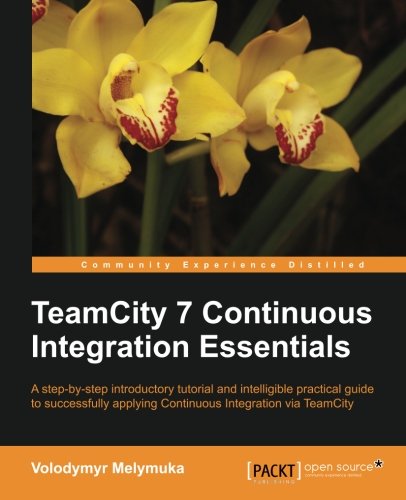

Most ebook files are in PDF format, so you can easily read them using various software such as Foxit Reader or directly on the Google Chrome browser.
Some ebook files are released by publishers in other formats such as .awz, .mobi, .epub, .fb2, etc. You may need to install specific software to read these formats on mobile/PC, such as Calibre.
Please read the tutorial at this link: https://ebookbell.com/faq
We offer FREE conversion to the popular formats you request; however, this may take some time. Therefore, right after payment, please email us, and we will try to provide the service as quickly as possible.
For some exceptional file formats or broken links (if any), please refrain from opening any disputes. Instead, email us first, and we will try to assist within a maximum of 6 hours.
EbookBell Team

4.8
104 reviewsA step-by-step introductory tutorial and intelligible practical guide to successfully applying Continuous Integration via TeamCity
Overview
In Detail
Nowadays, Agile application development is usually done at a fast pace when many developers are working on the same piece of code. Every so often, this becomes a real challenge if there's no permanent control over consistency of the project source. It is often impossible to force lazy and/or busy programmers to execute tests before and after each of their commits. Continuous Integration is a well-known life saver for distributed development environments with TeamCity being one of the best and easy-to-use instruments utilizing it.
"TeamCity 7 Continous Integration" is the first book of its kind showing in a sequential approach — how to start implementing Continuous Integration — over generic projects and enclosing rich features of the TeamCity as a project gradually evolves.
Learn how to do a quick-start with TeamCity and suite most of the common needs right out of the box. As the project grows and more sophisticated requirements to the build process arise, the examples from this guide will assist you showing how to unleash TeamCity hidden powers and adjust advanced features to bring stability into the distributed development process.
You will learn how to start a new Java project from scratch generating a working "skeleton" of web application using Apache Maven and later adding some business logic and writing certain tests. After that, you will know how to perform a swift attach of TeamCity facilities to your project and eventually change it into rich featured information source describing the current state of your venture. If you want to benefit from Continuous Integration and are considering using TeamCity then this book is for you.
You will be acquainted with everything you need to know in order to apply Continuous Integration with TeamCity by installing it first, then turning on automatic supervision over project's reliability, and finally tuning up advanced settings in order to match your needs.
What you will learn from this book
Approach
A step-by-step practical tutorial towards succesfully applying Continous Integration with TeamCity.